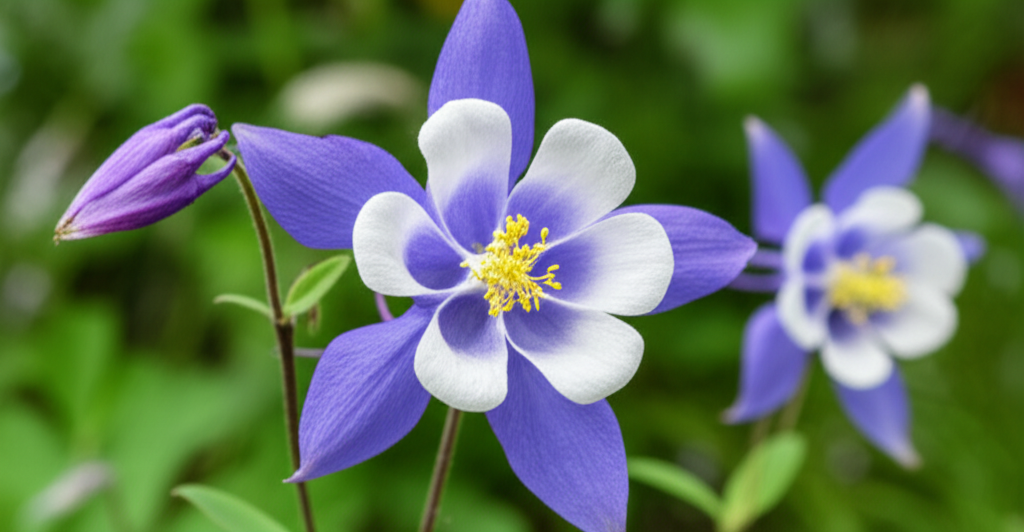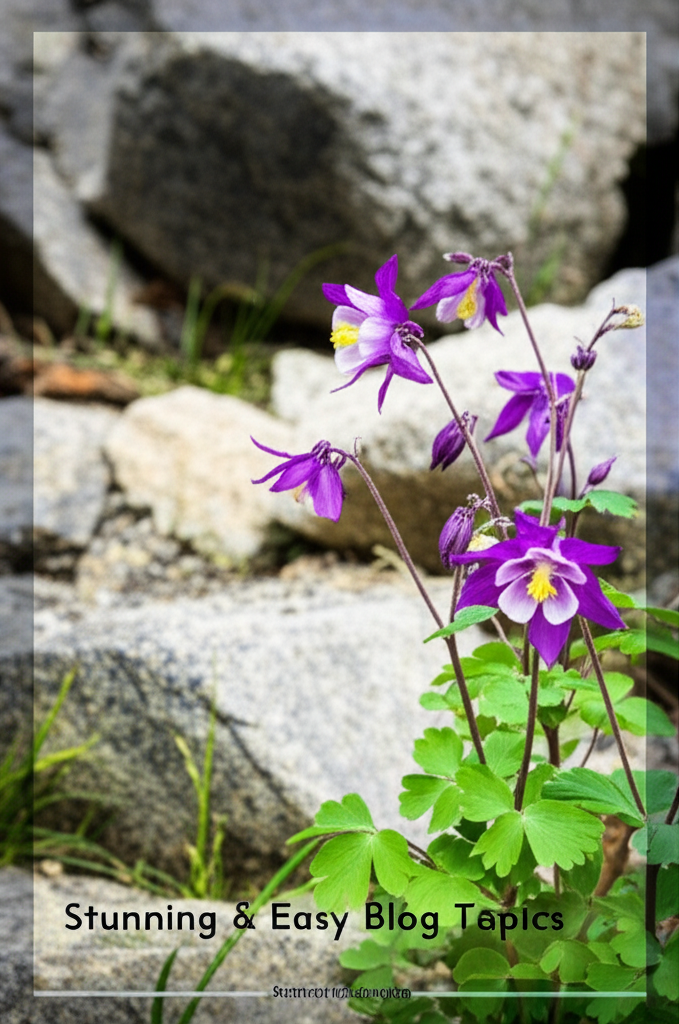Can Alpine Columbines Survive in Full Sun? A Gardener’s Deep Dive

Have you ever admired the delicate, jewel-toned blooms of the alpine columbine (Aquilegia alpina) gracing a rocky mountainside and wondered if such a resilient beauty could thrive in your own garden? Many gardeners are drawn to their unique spur-shaped flowers and intricate foliage, but a common question arises: Can alpine columbines survive in full sun? Understanding this crucial aspect of their care is paramount to unlocking their full potential, ensuring vibrant blooms, robust growth, and a sustainable presence in your landscape. Getting this right can mean the difference between a struggling plant and a cascade of captivating color.
Quick Answer Box
Yes, alpine columbines can survive in full sun, but with important caveats. While they appreciate some dappled shade, especially in hotter climates, they can tolerate and even bloom prolifically in sunny locations if provided with adequate moisture and well-draining soil. The key is managing heat and hydration to prevent stress.
What is Alpine Columbine Care and Why It’s Important in Gardening
Alpine columbine care refers to the specific practices and environmental conditions required to successfully cultivate Aquilegia alpina and its close relatives. These hardy perennials, native to the high alpine regions of Europe, are adapted to harsh conditions, including intense sunlight, fluctuating temperatures, and often nutrient-poor, rocky soils. Understanding their natural habitat is the first step in replicating their ideal environment in our gardens.
Proper alpine columbine care is vital for several reasons:
Plant Health and Longevity: Correctly meeting their needs for sunlight, water, and soil ensures the plant thrives, resisting pests and diseases and living for many years.
Bloom Performance: Many columbines, including alpine varieties, will produce more abundant and longer-lasting flowers when their sunlight exposure is managed appropriately. Too much intense heat without sufficient moisture can lead to premature fading and reduced flowering.
Garden Aesthetics: Successfully grown alpine columbines add a unique charm with their distinctive flowers, often resembling delicate bells or spurs, and attractive, often lobed or divided, foliage. Their presence can elevate rock gardens, borders, and woodland settings.
Ecological Benefits: Providing suitable conditions for native and alpine plants can support local pollinators like bees and butterflies, contributing to garden biodiversity.
Quick Recommendations or Key Insights about Alpine Columbine Care
Sunlight Balance: Aim for morning sun and afternoon shade in warmer climates; full sun is often acceptable in cooler regions.
Soil Drainage is Paramount: Alpine columbines loathe waterlogged roots; ensure sharp drainage, especially in heavier soils.
Water Wisely: Keep soil consistently moist but not soggy, particularly during dry spells and their blooming period.
Mulch Matters: A layer of mulch helps retain soil moisture and regulate soil temperature.
Deadheading Encouraged: Removing spent blooms can prolong flowering and prevent self-seeding if not desired.
Alpine Companions: Consider pairing them with other alpine plants that share similar environmental needs.
Detailed Breakdown of Alpine Columbine Care
The Science Behind Alpine Columbines and Sunlight
From a botanical perspective, Aquilegia alpina is a fascinating study in adaptation. Its native habitat in the European Alps exposes it to high levels of UV radiation and intense solar intensity, often above the tree line. However, these environments also typically feature cooler ambient temperatures, significant diurnal temperature swings (hot days, cool nights), and soils that drain exceptionally well, often composed of scree or gravel.
When we ask “Can alpine columbines survive in full sun?” we’re really asking if they can tolerate the conditions associated with full sun in our gardens, which often differ from their natural alpine environment. In many temperate and warmer regions, “full sun” can translate to prolonged periods of high heat and dryness, which are detrimental to plants adapted to cooler mountain climates.
Photosynthesis and Heat Stress: While sunlight is essential for photosynthesis, excessive heat can cause enzymes involved in this process to break down. High temperatures, especially when combined with water stress, can lead to wilting, leaf scorch, and reduced flowering. Alpine columbines, while sun-tolerant in their native, cooler mountain air, can experience heat stress in garden settings under prolonged, intense sun and high ambient temperatures.
Water Requirements: Plants in full sun generally transpire (lose water through their leaves) at a higher rate than those in shade. This increased water demand must be met for the plant to survive and thrive. In alpine regions, snowmelt and frequent mists often provide consistent moisture, even in sunny exposures. Gardeners must compensate for this by ensuring consistent watering.
Soil Temperature: Full sun can significantly heat up the soil surface. For plants that prefer cooler root zones, like many alpine species, this can be a major stressor. Well-draining soil, often found in their native rocky habitats, helps mitigate this by allowing air circulation and preventing roots from becoming “cooked.”
Practical Applications in the Garden: Finding the Right Spot
The understanding of alpine columbine’s sun tolerance directly informs planting decisions.
Cooler Climates (e.g., USDA Zones 4-6): In regions with milder summers, alpine columbines can often be planted in locations that receive full sun throughout the day. Their natural hardiness allows them to cope with the higher light levels.
Warmer Climates (e.g., USDA Zones 7-8+): In these areas, it’s crucial to provide some relief from the most intense afternoon sun. A location that gets morning sun and dappled or partial shade during the hottest part of the day (typically from 1 pm to 4 pm) is ideal. This is often described as “morning sun, afternoon shade.”
Microclimates: Consider the specific microclimate in your garden. A spot near a north-facing wall or under the canopy of a deciduous tree that provides summer shade can be perfect. Even a strategically placed taller perennial can offer beneficial dappled shade.
Container Gardening: Alpine columbines grown in containers can be easily moved to adjust their sun exposure throughout the season, offering a flexible solution for optimizing their light needs.
Common Mistakes to Avoid
Overwatering in Full Sun: While they need moisture, soggy soil in hot sun can lead to root rot. Ensure excellent drainage and water deeply but less frequently, allowing the top inch or two of soil to dry slightly between waterings.
Underestimating Water Needs in Full Sun: Conversely, failing to water sufficiently in hot, sunny conditions will quickly lead to wilting, scorched leaves, and reduced bloom.
Planting in Heavy Clay Soil: Alpine columbines absolutely require sharp drainage. Planting them in a garden bed with compacted clay soil without amendment is a recipe for disaster, as their fine root systems will rot.
Ignoring Afternoon Heat: Even in cooler climates, a heatwave can stress a plant in relentless full sun. Be prepared to provide extra water or temporary shade if extreme heat is predicted.
Planting Too Deeply: Ensure the crown of the plant is at soil level. Planting too deep can lead to crown rot, especially in moist conditions.
Expert Tips or Pro Insights
Companion Planting for Shade: In sunny locations, consider planting lower-growing, drought-tolerant perennials around the base of your alpine columbines. Plants like Sedum, Thyme, or low-growing ornamental grasses can help shade the soil and keep the columbine’s root zone cooler.
Gravel Mulch: For an authentic alpine look and excellent drainage, use a layer of gravel or grit as mulch around the base of the plant, rather than organic mulches like bark chips. This mimics their natural habitat and further improves drainage.
Watering Techniques: Water at the base of the plant to avoid wetting the foliage, which can help prevent fungal diseases. Soaker hoses or drip irrigation are excellent methods for consistent, targeted watering.
Fertilizing Sparingly: Alpine columbines are not heavy feeders. Over-fertilizing, especially with high-nitrogen formulas, can lead to lush foliage at the expense of blooms and may make them more susceptible to pests. A light application of balanced, slow-release fertilizer in early spring is usually sufficient.
Allowing Naturalization: If you enjoy self-seeding, allow spent flower heads to mature and drop their seeds. However, if you prefer to control their spread or maintain a tidier look, deadhead promptly after flowering.
Seasonal or Climate Considerations
Spring: This is the ideal time for planting alpine columbines in most regions. They benefit from the cooler temperatures and increased moisture of spring to establish their root systems. In full sun locations, monitor watering closely as temperatures begin to rise.
Summer: This is the most critical season for managing sun exposure and water. In warmer climates, ensure afternoon shade is provided. Water deeply and consistently, especially during dry spells. Deadhead spent flowers to encourage reblooming.
Autumn: As temperatures cool, alpine columbines often benefit from a light watering if the fall is dry. They are hardy perennials and will die back to the ground in winter in colder climates.
Winter: In regions with freezing temperatures, protect the crown with a layer of mulch (like evergreen boughs or straw) after the ground has frozen. This helps prevent heaving caused by freeze-thaw cycles. In milder climates, they may remain evergreen or semi-evergreen.
Buying Guide or Decision-Making Process
When purchasing alpine columbines, consider the following:
Source: Buy from reputable nurseries that specialize in alpine or perennial plants. This increases your chances of getting healthy, true-to-type specimens.
Plant Appearance: Look for plants with healthy, green foliage, free from spots or signs of pests. The root system should be well-developed but not circling excessively in the pot.
Variety: While the question focuses on Aquilegia alpina, many other columbine species and hybrids are available, such as Aquilegia caerulea (Rocky Mountain Columbine) or Aquilegia x hybrida. Research which varieties are best suited to your specific climate and aesthetic preferences. Some hybrids are bred for greater sun tolerance or extended bloom time.
Container Size: Plants are often sold in 4-inch or 1-gallon pots. A larger pot generally indicates a more established plant.
FAQ Section for Alpine Columbine Care
Q1: My alpine columbine leaves are turning yellow. What could be wrong?
Yellowing leaves can indicate several issues. If the soil is constantly wet, it could be root rot due to poor drainage. If the plant is in scorching, full sun without adequate moisture, it might be heat stress. Ensure good drainage and consistent, but not excessive, watering. Also, check for any signs of pests.
Q2: Can I grow alpine columbines from seed?
Yes, alpine columbines can be grown from seed, but it often requires patience. Seeds benefit from a period of cold stratification (exposure to cold, moist conditions) to break dormancy. Sow seeds in fall or early spring and be prepared for them to take a year or two to establish and flower.
Q3: Do alpine columbines spread aggressively?
Alpine columbines are generally well-behaved plants. They may self-seed gently in ideal conditions, but they are not typically considered aggressive spreaders. If you wish to prevent seeding, deadheading spent blooms is effective.
Q4: Are there any pests or diseases that commonly affect alpine columbines?
Columbines can occasionally be affected by leaf miners, aphids, or powdery mildew. Good air circulation, proper watering, and planting in the correct conditions (avoiding overly damp or crowded situations) can help prevent most problems. Promptly remove any affected leaves.
Q5: How tall do alpine columbines typically get?
Aquilegia alpina typically grows to about 1-2 feet (30-60 cm) in height, with a similar spread. The exact size can vary depending on growing conditions.
Conclusion for Alpine Columbine Care
In conclusion, the question of whether alpine columbines can survive in full sun is answered with a nuanced “yes, with careful management.” While their alpine heritage suggests a tolerance for intense light, the realities of garden environments, particularly in warmer climates, necessitate a strategic approach. By understanding the botanical adaptations of these charming plants and providing them with well-draining soil, consistent moisture, and judiciously managed sunlight – often a balance of morning sun and afternoon shade in hotter regions – you can ensure they not only survive but truly flourish. Embrace the beauty of
Aquilegia alpina* and create a captivating display that brings a touch of the alpine meadows to your own garden sanctuary.

